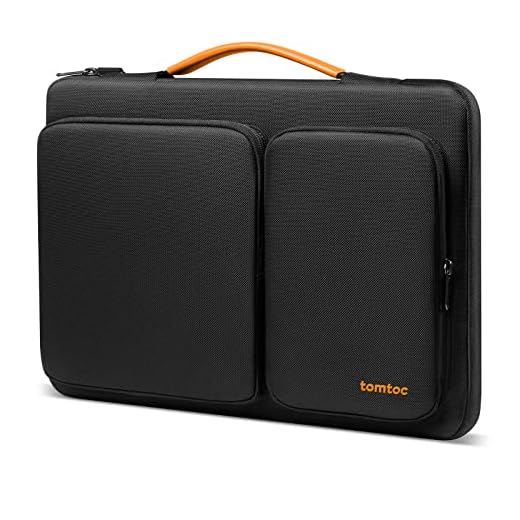


For maximum safety and convenience, stowing away your gadgets in the cabin is highly advisable. The risks associated with placing your valuable devices in the cargo hold outweigh any potential benefits. High chances of damage or theft during transit make this choice unwise.
Airlines often limit the transport of batteries and certain components in the freight area, which can lead to complications. Keeping your items with you enables constant access, ensuring that you can address any concerns immediately. It also allows for compliance with varying regulations that airlines may implement.
Security checks might require you to remove your devices from their cases, facilitating thorough inspections. Having them within reach not only eases navigation through these processes but also ensures your devices remain in optimal condition throughout your travels.
Transporting Personal Devices Safely
For optimal safety, refrain from storing valuable gadgets in the cargo section. The risk of damage due to mishandling during transit is significant, especially for fragile components. Devices can suffer from impacts, pressure changes, and temperature fluctuations.
Prioritize securing items in a carry-on, where you maintain direct control. Ensure that your gear is stored in padded cases or protective sleeves to provide an additional layer against potential harm. If you must check the items for any reason, invest in robust protective packaging, but this does not eliminate risk entirely.
Furthermore, be aware of potential theft. Keeping personal technology within sight limits chances of loss. Insurance may cover damages, but ensuring the safety of valuable items rests primarily in your hands.
As a practical tip, plan for airport security checks. Laptops and tablets may require separate screening, so easy access to these items can expedite the process and reduce stress.
Risks of Placing Electronics in Checked Baggage
Travelers should consider the following hazards associated with storing devices in hold bags:
- Damage from Handling: Checked bags undergo rough handling. Your gadgets may suffer physical impact, which can lead to screen cracks or internal malfunctions.
- Temperature Extremes: Cargo holds experience significant temperature variations. Many devices are sensitive to excessive heat or cold, potentially resulting in battery failure or other damages.
- Theft: Valuable items left in checked bags are prime targets for thieves. Reports indicate that a notable percentage of luggage thefts involve tech gadgets.
- Battery Restrictions: Lithium-ion batteries can pose fire risks. Airlines have strict regulations regarding battery-safe storage, making hold baggage a risky proposition for devices with such batteries.
- Mishandling during Security Checks: Devices removed from bags at checkpoints may be misplaced or not returned, especially with multiple passengers going through security.
Travelers should weigh these risks carefully before deciding where to store their valuable gadgets. For additional insights, you might find this link helpful: how can ad extensions contribute to increasing user engagement.
Airline Policies on Electronics in Checked Baggage
Most airlines recommend avoiding the placement of high-value gadgets in the hold. Policies differ significantly among carriers regarding restrictions and allowances. It is critical to consult individual airline regulations before traveling.
General Guidelines
Airlines typically classify items such as laptops, tablets, and cameras as fragile materials. Many carriers emphasize that these devices should remain in the cabin, primarily due to the risk of damage and theft. Some may even specify size or weight restrictions, leading to potential complications if devices must be stowed.
Specific Airline Rules
For instance, low-cost airlines might have stricter limitations compared to full-service carriers, indicating the necessity of checking specific guidelines. Some airlines permit power banks and chargers in checked bags but restrict their capacity. Such detailed policies aim to enhance passenger safety and reduce fire risks associated with lithium batteries.
Best Practices for Packing Electronics for Travel
Prioritize protective cases for fragile items. Use padded sleeves for laptops and tablets; they reduce impact damage during transport. For smaller gadgets, choose hard shell cases that fit snugly to prevent movement inside bags.
Disassemble any attachments. Remove chargers, cables, and accessories to avoid tangling and minimize bulk. Store these components in separate pockets for easy access.
Secure devices in the center of your backpack or carry-on. This placement shields them from external pressure and drops. Ensure cushioning is evenly distributed around the gadgets to enhance protection.
Consider avoiding high-capacity batteries in checked items, as airlines often have restrictions. Keep spare batteries in your personal item, ensuring they comply with airline regulations.
Wrap each item in a soft cloth to prevent scratches caused by contact with other goods. Use bubble wrap for additional cushioning around high-value devices.
Include a detailed list of your gear, especially when traveling with multiple items. This can assist in tracking if your belongings go missing or are mishandled.
Charge all devices fully before travel. Having power helps with troubleshooting in case of any technical issues during the trip.
Review airline guidelines for weight limits and dimensions. Adhering to these requirements optimizes your packing strategy and can prevent the need for additional fees.
Alternatives to Stowing Electronics in Checked Bags
Opting for a carry-on scenario offers the most secure way to travel with your devices. Place valuable items in personal bags, ensuring they remain within view and easy to manage.
Using a Stylish Backpack
Select a high-quality best backpack patagonia designed for comfort and organization. Such backpacks often feature padded compartments and dedicated pockets for gadgets, minimizing movement and risk of damage.
Waist Packs for Convenience
A best running waist pack waterproof can serve as a practical solution for carrying small, essential items while on the go. These packs keep gadgets close and secure, allowing quick access during security checks or long layovers.
Consider shipping valuable devices ahead of time to your destination, ensuring they arrive safely without the risks associated with air travel. Utilize specialized courier services for package tracking and insurance options, offering peace of mind.







